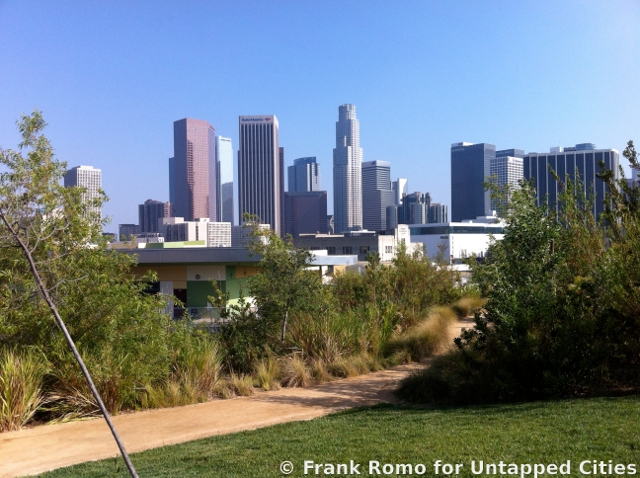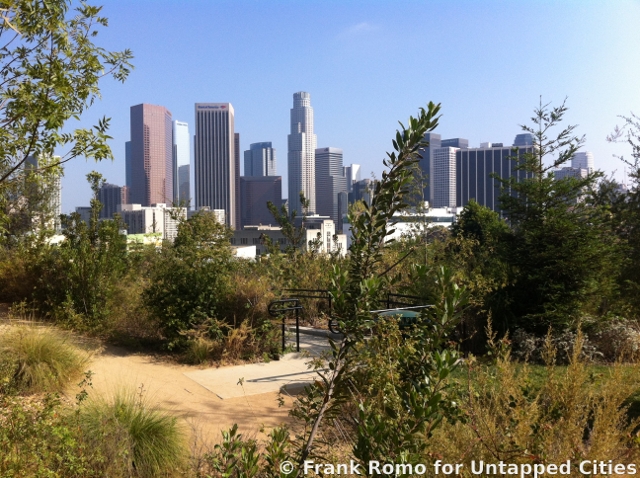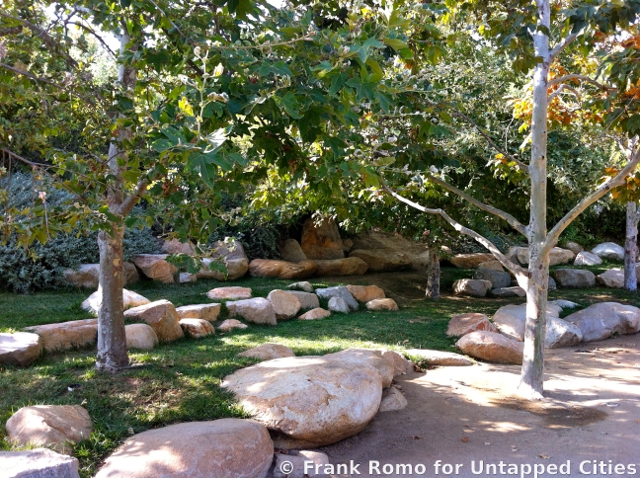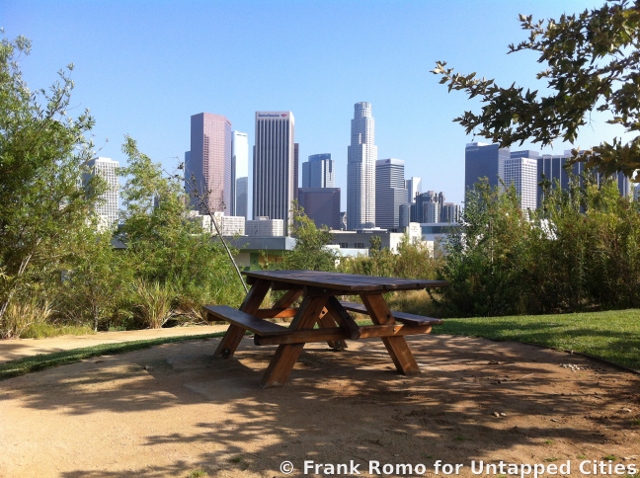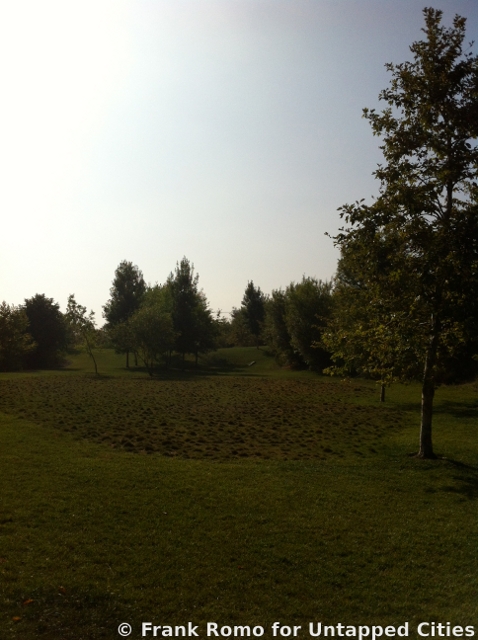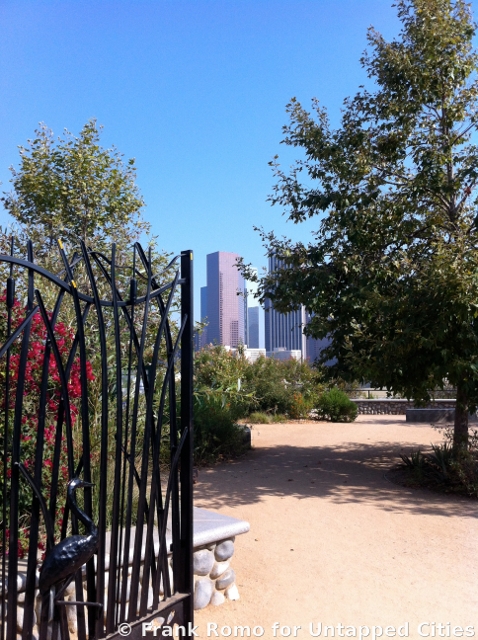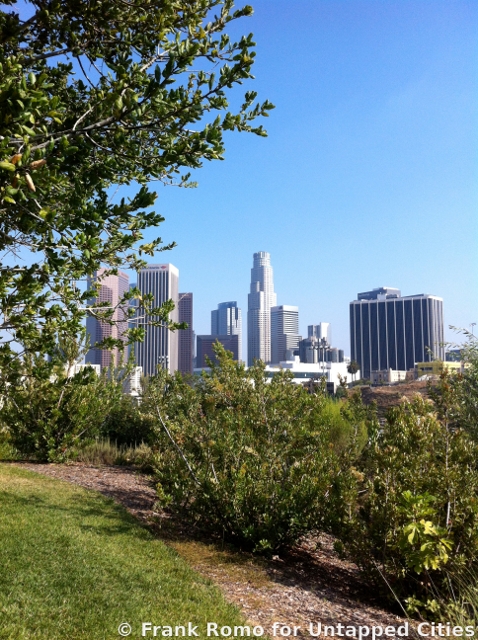Vista Hermosa Park is an unexpected nature preserve that reveals the vast potential for nature within Los Angeles’ urban sprawl. The park offers visitors a remarkable panorama of the city skyline framed by a lush natural environment. This large natural space in the heart of the urban landscape feels secluded, even though it is near two major freeways and just north of downtown L.A.
The park, along with 25 additional acres of land, was originally intended to be a mixed-use project that included a state-of-the-art high school, mingled with retail and high-rise housing. Environmental and seismic concerns halted construction and the project was reevaluated, but not before upwards of nine figures had been spent on the school’s construction.
Following input from the local community, developers moved forward with a new plan that reduced the size of the school, removed the housing and retail elements, installed a gas mitigation system and added a 10-acre natural park. Vista Hermosa Park brings a much needed green space to one of the most park-poor cities in the United States. The dominance of cars and highways has displaced much of Los Angeles’ city parks. The only other natural spaces available to city dwellers are found along the city’s periphery and are not easily accessible to downtown residents.
Vista Hermosa was designed as an urban revitalization project aimed at enhancing community life and increasing downtown’s vitality. The Santa Monica Mountains Conservancy and the City of Los Angeles, along with other government agencies, engaged in a joint venture to bring Los Angeles its first urban park in more than 100 years. Vista Hermosa gives Los Angeles residents a unique opportunity to experience the city’s natural habitat. Situated in a group of low hills overlooking downtown, the park is layered to maximize space. Its design serves a large capacity of users by distributing them amongst various amenities.
The park features winding trails, large open meadows, picnic grounds and a makeshift dog park, as well as a sculpture garden that includes a children’s play area. This variety of options allows park goers to create an individualized experience within the public space. On any given day you may see people walking their dogs, studying in the shady grotto, or simply watching the planes fly over the city on their way to LAX, all while enjoying the Southern California climate.
The park not only provides recreation opportunities but also offers essential environmental and educational services to the local community. It hosts a diverse array of indigenous vegetation, helping restore the natural topography and attract native wildlife. Vista Hermosa lies in the path of the Pacific Flyway, and provides a rare resting spot for as many as 350 migratory species of birds.
Park designers utilized Vista Hermosa’s natural features to create a self-contained watershed. All of the park’s hard surfaces – including the parking lots, pavement and granite pathways – are made from permeable materials that allow water to seep through. A 20,000-gallon cistern located underneath the parking lot captures storm water and circulates it throughout the park for irrigation. The park’s restrooms and welcome center have planted or “green” roofs that retain rainwater and provide insulation. The roofs help save energy on heating and cooling, while simultaneously contributing to the visual aesthetic of the park.
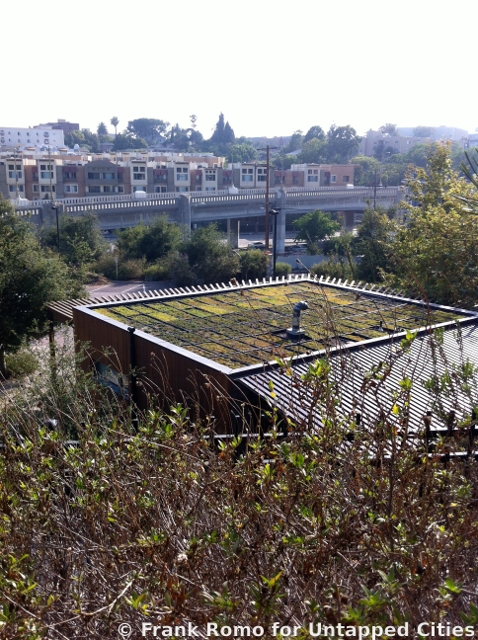 One of the parks’s “green” roofs.
One of the parks’s “green” roofs.
Vista Hermosa is a well-hidden gem that offers a diversity of resources to park patrons while benefiting the local environment. The park’s urban and ecological design offers new perspectives on urban land use and should be used as a model for future revitalization.







